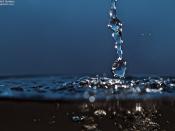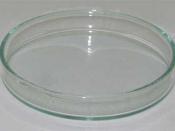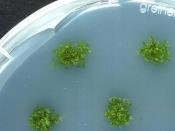Introduction:
To achieve experiments that determined the role that the environmental factors play in the habitat selection, we used terrestrial isopods (Crustacea), Armadillidium vulgare. These tiny creatures are commonly referred to as pillbugs, rolie-polies, or sowbugs. Pillbugs use gills to respire, therefore, their affinity to humid surroundings. These isopods can be located in leaf litter or under logs, where they are able to consume detritus. Some interesting characteristics about the pillbug anatomy are seven pair of legs, two pairs of antennae, compound eyes and three main body parts which are the head, thorax and abdomen. Their colors are dark gray to white or brown. The experiment permitted us to proximate hypotheses about light and humidity effects on the habitat selection.
The hypothesis prepared in the humidity experiment was that if pillbugs contain gills structures within their anatomy, then a humidity habitat will be their main attraction. The second hypothesis concerning the light experiment was that if a dark place is more humid than a light place, then the creatures will be lured to the dark side, were humidity should be higher.
Scientists have been studying the aspects of animal behavior for long periods of time. "The study of animal behavior is undoubtedly one of the oldest aspects of biology." (Campbell 1999) The behavior is due to genetic and environmental factors that interact with the creature. Behavior are "the actions or reactions of persons or things under given circumstances." (The American Heritage Dictionary, 1994) Our goal in the experiment was exactly as cited above: to observe the responses and/or reactions of pillbugs to humidity and light.
Materials and Methods:
To attain our goal, a series of experiments were executed. At the beginning of the laboratory, each research team, consisting 3 students, had to obtain 10 pillbugs. Ten pillbugs were positioned on...


